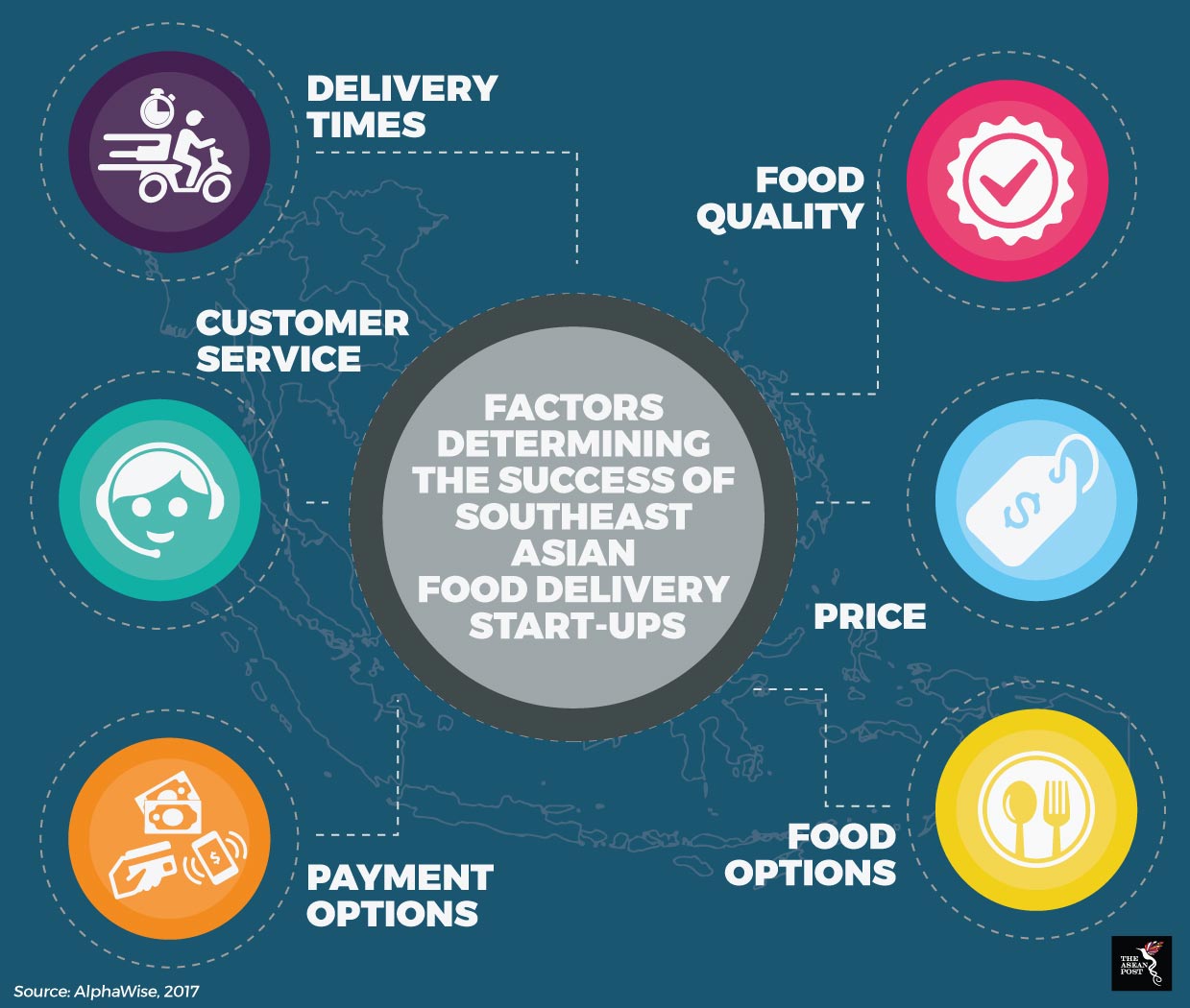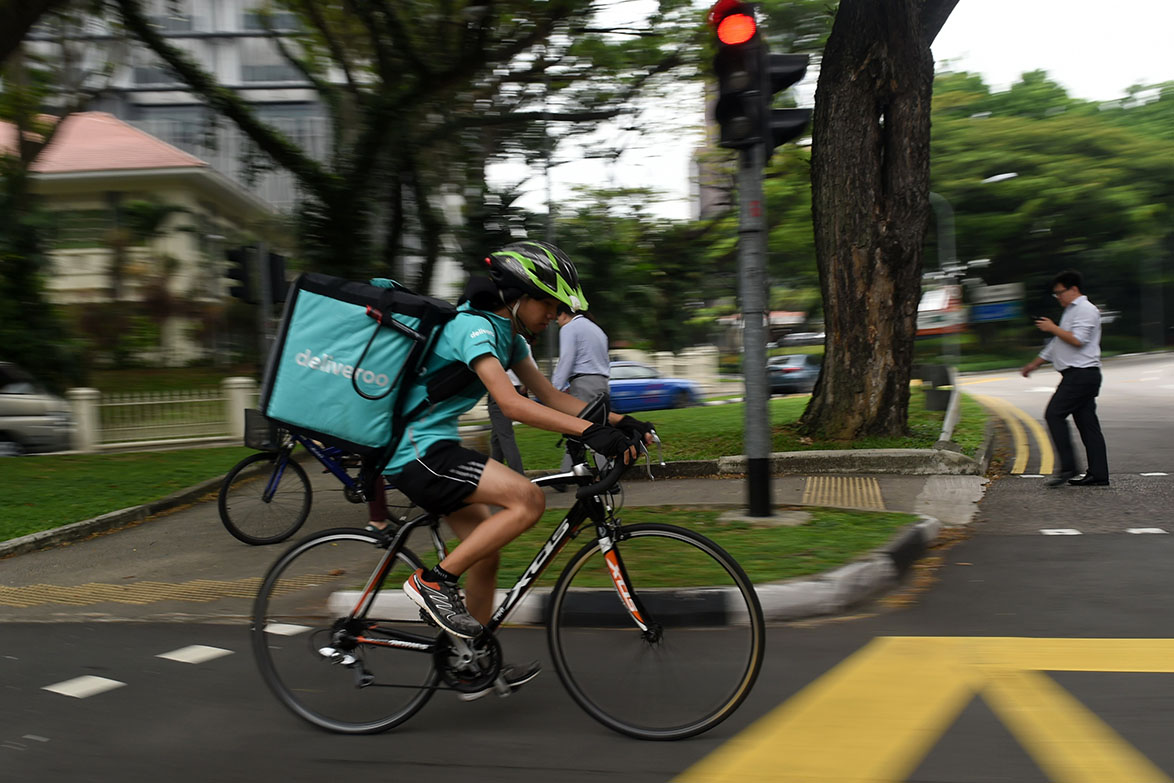Technology has changed the way consumers decide about food choices; be it where and when to buy it, or how it should be delivered to them. This in turn influences how the food industry reaches out to its customers today. The challenge for the food industry is to provide highly efficient services while catering to unique customer preferences in different markets across Southeast Asia. Consumer demand for food delivery in Southeast Asia increased 22-fold between the third quarter of 2015 and the third quarter of 2017, according to a 2017 joint report by Google and Temasek.
Tech enables innovative business models for food delivery
From a customer point of view, what matters most in their choice of food delivery platform is the quality of service. This will influence their decision on whether to continue using the service in question. Heavy investment in technology can only become a product differentiator if it helps increase turnover times, efficiency of responding to customer complaints, and the ability to overcome logistical challenges such as traffic or bad weather conditions. A strong food delivery service addresses important customer needs such as a good ordering process, quick food preparation and fast delivery time.
According to research by McKinsey & Company in 2016, 60% of food delivery consumers in markets across the world prioritise speed of delivery as the biggest variable in customer satisfaction. In Malaysia, factors like bad weather conditions and overwhelming order numbers have contributed to food delivery delays, according to Alvee Khan, commercial director for Foodpanda Malaysia.
Some food delivery providers have attempted to overcome this setback by offering improved business models based on technological innovation. Dahmakan’s 'end-to-end' approach, i.e. cooking the food and then delivering it to customers too, differentiates its product from Foodpanda’s, which operates on the basis of partnerships formed with local eateries to deliver their food to customers.
“By combining efficiencies of large-scale food production such as those found in airline catering with machine learning routing technology, we create a food delivery experience that is of higher quality and better value than any other alternatives,” said Jonathan Weins, CEO and co-founder of Dahmakan.
Using this business model, combined with the Dahmakan Intelligent Operator System (DIOS) enables Dahmakan to control delivery times as much as possible. Not only is it able to deliver meals to customers at fixed window times, but it is also able to offer a money-back guarantee in the case of delays. The company recently announced plans to expand across Southeast Asia after raising funding of up to US$2.6 million, according to reporting by TechCrunch in January 2018.
Despite a similarity of approach in combining tech with business models, not all food deliveries may succeed on the same playing field. Foodpanda, for instance, was forced to withdraw from Indonesia in 2016 after failing to turn a profit in that market.
"The challenge for Foodpanda was that they never managed to get user discovery into their platform," commented Steven Kim, co-founder of the restaurant discovery site, Qraved.
He stressed that customer retention was a key issue that Foodpanda was unable to overcome in the Indonesian market because its service simply did not meet the needs of that particular market.
“Indonesians tend to put through very small volumes of orders at any one time, making overheads justifiable only against large numbers of customers. In fact, it is likely that a new strategy would have been needed altogether, something which would have taken more time to develop,” explained Kim.

This is because richer data on consumer habits takes time to gather, especially in a fragmented market like Indonesia’s. However, it would allow food delivery companies to formulate unique strategies to cater to customer preferences in specific target markets.
GrabFood's strategy in Indonesia includes partnering with local food delivery services such as Madhang to reach deeper into customer preferences. Partnering with Madhang is unique to the Indonesian market because of Madhang’s focus on promoting local fare sold by micro, small and medium enterprise businesses. It does this by tying up with local stalls to offer dine in or takeaway options. By catering to specific customer preferences, GrabFood is likely to expand its reach to a wider market, which allows it to develop more specific products to cater to customer preferences in future.
Singapore’s Grain, similar to Dahmakan, develops its menus in collaboration with an in-house R&D team, which it then commits to professional chefs to prepare. 60% of Grain’s customers in 2017 were repeat customers, according to reporting by tech media platform, e27. According to the same report, Grain also tripled its investment into technology in 2017.
The future of food delivery may be built on wider technological options, but this also means that customer preferences and expectations will likewise evolve in tandem with these changes. A sustainable food delivery business isn’t just built on great technology, but on a solid understanding of the market being catered to.
Recommended stories:
